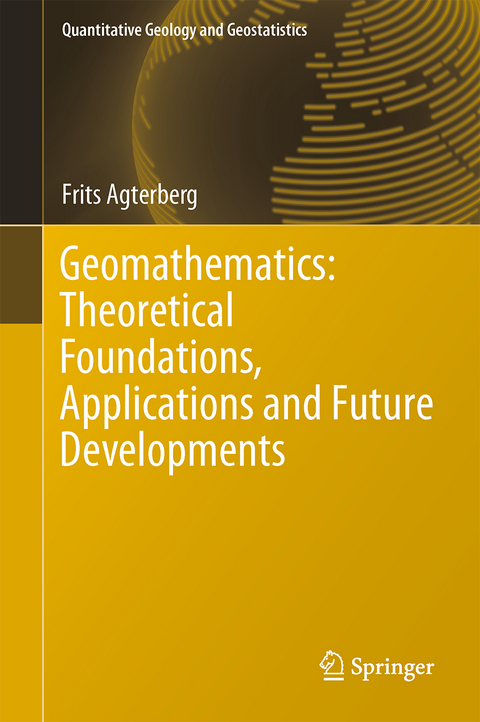
Geomathematics: Theoretical Foundations, Applications and Future Developments
Seiten
2014
|
2014
Springer International Publishing (Verlag)
978-3-319-06873-2 (ISBN)
Springer International Publishing (Verlag)
978-3-319-06873-2 (ISBN)
This book provides a wealth of geomathematical case history studies performed by the author during his career at the Ministry of Natural Resources Canada, Geological Survey of Canada (NRCan-GSC). Several of the techniques newly developed by the author and colleagues that are described in this book have become widely adopted, not only for further research by geomathematical colleagues, but by government organizations and industry worldwide. These include Weights-of-Evidence modelling, mineral resource estimation technology, trend surface analysis, automatic stratigraphic correlation and nonlinear geochemical exploration methods. The author has developed maximum likelihood methodology and spline-fitting techniques for the construction of the international numerical geologic timescale. He has introduced the application of new theory of fractals and multi fractals in the geostatistical evaluation of regional mineral resources and ore reserves and to study the spatial distribution of metalsin rocks. The book also contains sections deemed important by the author but that have not been widely adopted because they require further research. These include the geometry of preferred orientations of contours and edge effects on maps, time series analysis of Quaternary retreating ice sheet related sedimentary data, estimation of first and last appearances of fossil taxa from frequency distributions of their observed first and last occurrences, tectonic reactivation along pre-existing schistosity planes in fold belts, use of the grouped jackknife method for bias reduction in geometrical extrapolations and new applications of the theory of permanent, volume-independent frequency distributions.
Foreword.- Preface.- 1. Complexity of the Geological Framework and Use of Mathematics.- 2. Probability and Statistics.- 3. Maximum Likelihood, Lognormality and Compound Distributions.- 4. Correlation, Method of Least Squares, Linear Regression and the General Linear Model.- 5. Prediction of Occurrence of Discrete Events.- 6. Autocorrelation and Geostatistics.- 7. 2D and 3D Trend Analysis.- 8. Statistical Analysis of Directional Features.- 9. Automated Stratigraphic Correlation, Splining and Geological Timescales.- 10. Fractals.- 11. Multifractals and Singularity Analysis.- 12. Selected Topics for Further Research.- Index.
| Erscheint lt. Verlag | 29.7.2014 |
|---|---|
| Reihe/Serie | Quantitative Geology and Geostatistics |
| Zusatzinfo | XX, 553 p. 339 illus., 75 illus. in color. |
| Verlagsort | Cham |
| Sprache | englisch |
| Maße | 155 x 235 mm |
| Gewicht | 1020 g |
| Themenwelt | Naturwissenschaften ► Geowissenschaften ► Geologie |
| Naturwissenschaften ► Geowissenschaften ► Mineralogie / Paläontologie | |
| Schlagworte | Exploration Geochemistry • Geostatistics • mathematical geoscience • Mineral Resource Appraisal • Mineral Resources • Quantitative Geology • Structural Geology • Three-dimensional Geological Maps |
| ISBN-10 | 3-319-06873-3 / 3319068733 |
| ISBN-13 | 978-3-319-06873-2 / 9783319068732 |
| Zustand | Neuware |
| Haben Sie eine Frage zum Produkt? |
Mehr entdecken
aus dem Bereich
aus dem Bereich


